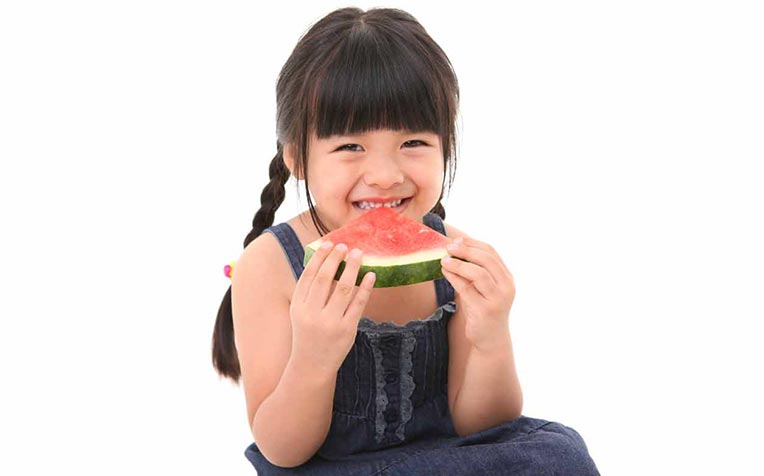
Snacking in children doesn't have to be a bad thing depending on the type of snack, amount and time that it is consumed.
Snacks: Are they necessary for children?
Toddlers (1 to 3 years of age) still have small stomachs and cannot eat large portions at one sitting to meet their nutritional requirements. Hence, snacks are necessary to meet their requirements for growth. These snacks can be seen as nutritional complements to meals or a smaller portion of a meal for the day. “Between-meal snacks can also reduce the stress children experience from their parents/caregivers expectations that they consume all their nutritional requirements from 3 meals a day,” says the Nutrition and Dietetics Department at KK Women’s and Children’s Hospital, a member of the SingHealth group.
What snacks should you give to your child?
Snacking can help build or ruin a child’s healthful diet. The key depends on the type, amount and time the snack is consumed. A snack that is high in fat and sugar may contribute to empty calories, hence leading to weight gain. Moreover, if a snack is consumed in excessive amounts and/or too near to meal times, it may affect the child’s appetite for the main meal. So, parents should offer nutrient-dense foods as snacks, 2-3 hours apart from main meals.
Nutrient-dense snacks are those that
- provide carbohydrates (ideally with minimal or no added sugars),
- are low in saturated and trans fats,
- are rich in protein and/or other nutrients such as fibre, iron and calcium.
Below are some examples of healthy snacks:
|
|
- Older children may be able to finish the servings specified at one sitting, offered 1 to 3 times a day.
- Have planned timings for snacks
- Offer toddlers snacks 2 to 3 hours after a main meal. Older children do well with 3 to 4 hour gaps between meals and snacks. Avoid offering snacks directly after a meal or as a replacement for main meals to avoid the habit of grazing.“If your child starts to ask for snacks shortly after main meals are not eaten or asks for snacks instead of completing the main meal, try to offer the meal again if it’s still available. Otherwise, let your child know firmly that he/she will have to wait until the next planned snack timing before having the snack,” says Jasly Koo.
- Offering the snack of his/her choice on request reinforces the bad habit of choosing snacks over main meals. Parents should not worry that their child will not be eating enough and should stay firm about not giving snacks over main meals, especially if they will be offering a nutritious snack at the scheduled snack timing.
- For children who have difficulty concentrating or sitting down to complete a meal, the main meal could be broken down into “snack”-sized portions.
- Limit snacks which are high sugar, salt or fatAvoid giving sweetened beverages like soft drinks, flavoured teas and fruit juice drinks, confectionery like sweets and chocolates, and high salt/fat snack foods like potato chips, french fries and nuggets as they are high in sugar, salt and/or fat, and low in nutrients. They contribute to a high calorie intake if consumed in excess, thus leading to weight gain.
- Refrain from categorising foods as healthy and “unhealthy”Parents/caregivers should also refrain from categorising foods into healthy and “unhealthy” foods and snacks. Allow the occasional “unhealthy” snack (e.g. once in 1-2 weeks, and in small portions), so that their child doesn't crave for them. They should avoid “forcing” the child to eat only healthy snacks, as it may backfire and cause them to dislike them.
- Be good role modelsParents should be good role models and not eat foods that they do not want their children to have. Hence, limit your intake of sweet foods and drinks as well as salty and fried snack foods as your child will usually want to eat the same snacks that you are having!
- Encourage mindful eatingTo encourage mindful eating and enable your child to be aware of his/her hunger-satiety cues, remove distractions like TV, computer games, social media devices, books and toys during meal and snack times so that your child can concentrate on enjoying his food and your company.
- Sit down for meals and snacksTo prevent choking, always supervise your toddler and encourage him/her to sit down for meals and snacks rather than eating while running around. It is also a good idea to set a limit to meal times (e.g. 30 minutes for meals and 20 minutes for snacks), so that your child gets used to a routine of set meal times instead of having a “buffet” throughout the day.
- Stock up on healthy snacksParents can stock up on a variety of healthy dry snacks (e.g. breakfast cereal, dried fruits), or frozen foods (e.g. wholegrain waffles, frozen pau), at home, so they can offer a snack quickly. Similarly, parents can keep healthy snacks on hand when going out with their children, in case they are unable to find suitable snacks outside.
- Read the fine printBe aware that some commercial snacks targeted at children are often packaged with colourful pictures that appeal to them. Take time to read nutrition labels and ingredients list, and select snacks without added sugars, saturated fat and trans fats where possible.
Ref: N24
Contributed by


















 Get it on Google Play
Get it on Google Play